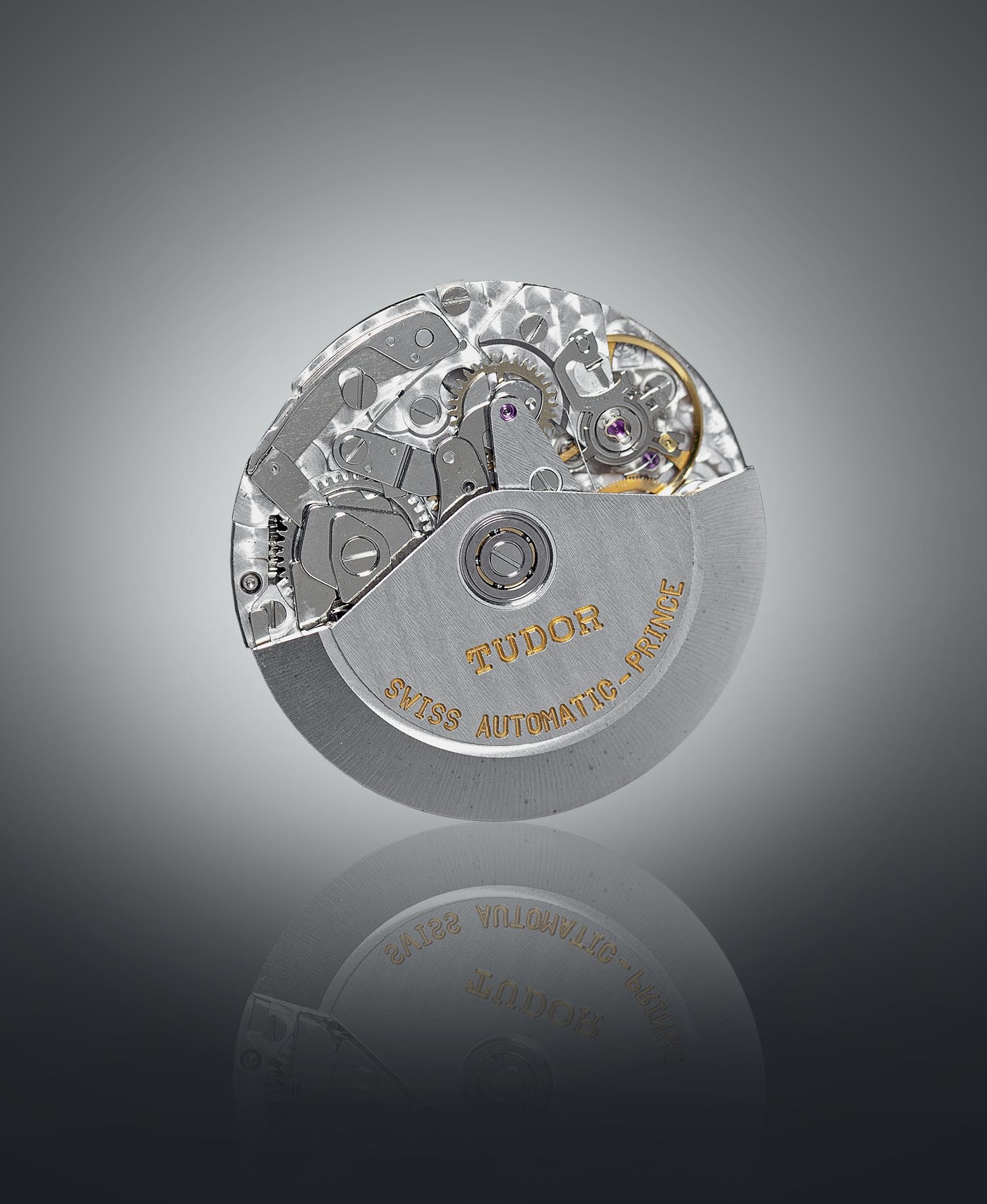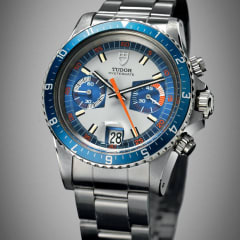Tudor HistoryThe Chronographs:
From 1995 to 2000
For nearly half a century, TUDOR has left its mark on the history of chronographs with products of strong identity, unique style and uncompromising quality. By proving equal to the task, by kindling passion, by constantly improving its products and by offering models clearly belonging to their era but retaining their own distinct identity, TUDOR has earned a place apart in the field of sports chronographs, embodied in the development of four successive families of products. The year 1995 marked the inauguration of the second series of Prince Oysterdate self-winding chronographs, introducing numerous aesthetic and technical improvements such as a reworked and refined case and a virtually scratchproof sapphire crystal.

fourth series: tudor prince oysterdate
In 1995, with the introduction of the series of 79200 references, the appearance of the Prince Oysterdate self-winding chronograph was rethought subtly but significantly. To begin with, the case, which over three generations of chronographs had essentially retained its famous imposing, sharp presence, became more refined and softer. Keeping a highly recognisable silhouette, it now presented to the eye softer lines consisting of curves and rounded configurations. Three more notable changes marked the design of this fourth generation: a new characteristic dial, silver with cream-coloured counters, was introduced, a black anodised aluminium insert with a transfer replaced the traditional Plexiglas tachymetric-scale bezel insert, and a sapphire crystal with a Cyclops lens was adopted to replace the Plexiglas crystal. Its movement remained the self-winding Valjoux Calibre 7750 in a substantially improved version. Its finishing was characteristic and benefitted from a particular aesthetic effort. Entirely refreshed, its decor was called “special TUDOR”. Its rotor was no longer decorated with transfer marking, but engraved and gilded. Its screws were now polished rather than matt. In 1996, the company Montres TUDOR S.A. celebrated its 50th anniversary. Having attained its maturity, the brand was now known in all markets. Thus the direct references to Rolex were gradually disappearing from the cases, winding crowns and bracelets of TUDOR watches.
TUDOR PRINCE OYSTERDATE 79280
The 79000 series is the ultimate incarnation of the TUDOR Oysterdate chronograph in terms of performance and quality. Its movement was used in the most advanced version; its sapphire crystal was particularly resistant. Reference 79280 indicated the model with a steel bezel and an engraved tachymetric scale. This example produced in 1995 presented a brilliant enamel-type white dial with black counters. The “OYSTERDATE” signature was visible on the dial and the folding clasp bore the TUDOR logo.
1996 TUDOR PRINCE OYSTERDATE 79260
Reference 79260 was the one on which the tachymetricscale bezel with the Plexiglas insert was replaced by an anodised aluminium insert with a transfer. The example presented here was produced in 1996 and featured the new-variation chronograph dial with a silver background and cream-coloured counters.
2000 TUDOR PRINCE DATE 79260
As of 1998, the TUDOR Prince Oysterdate chronographs appeared in the catalogue on steel bracelets with five links referenced 62490 and signed TUDOR. The Oyster bracelet was thus progressively abandoned. Reference 79260 illustrated here and produced in 2000 bore only TUDOR markings and had, logically, abandoned the Oyster name; its dial now bore the signature “PRINCE DATE”. This name change was noted as of 1997, the year during which the Prince Date chronographs would become available for the first time on leather straps with a steel folding clasp marked TUDOR.










